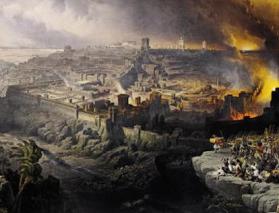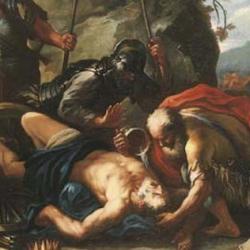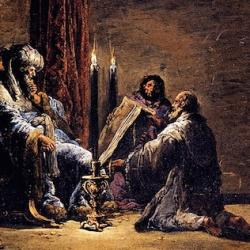When Queen Sheba visits Solomon, she sees things that take her breath away (2 Samuel 9:3–4), seven things, which roughly match the seven days of creation:
1. All she sees expresses the wisdom of Solomon, wisdom from God who made the world by His wisdom (Proverbs 8).
2. Sheba is impressed with the house Solomon built. We’re not told whether this is the house of Yahweh or Solomon’s own palace. If the former, it is an earthly form of the firmament-tent of Yahweh.
3. On Day 3 of creation, food sprang from the earth, grasses with seeds and trees with fruit. Earth becomes a table set with food for animals and humanity. Sheba is impressed with the food (ma’akal, the “edible things”) of Solomon’s table.
4. Sheba is impressed with the seating of Solomon’s servants, who are enthroned (moshav) like the lights that rule from the heavens. Day 4.
5. Others stand (‘amad) to serve (sharat) at Solomon’s table, like the priests who stand to serve at Yahweh’s altar-table in the temple. The text calls attention to their “attire” (malbush), and clothing is a common Day 5 theme in the Torah. Swarming things created on Day 5 form clouds and coverings, resembling clouds of incense or billowing robes on a priest.
6. A third category of servant is also named—cupbearers (mashqeh). In several places, the word means “well-watered” (Genesis 13:10; Ezekiel 45:15) or “drink” (Isaiah 32:6). Cupbearers are “refreshment-bearers” for kings. Perhaps we can see a distant hint of the abundant water of the garden of Eden.
7. The final thing that impresses Sheba is the ascent by which Solomon ascends (‘aliyyato ‘asher ya’aleh, using a form of ‘alah twice) to the house of Yahweh. Ascent is a Sabbatical theme, reinforced by the fact that the ascent is to the house of Yahweh.
All this fits the Chronicler’s typology of kingship. Solomon’s court resembles the courts of Yahweh’s house. Like Yahweh, Solomon has servants who stand, a table, food and drink and festivity. Since the temple is an architectural expression of the creation, it’s fitting that Solomon’s house and court would also conform to the creation pattern.
All this leaves Sheba without spirit. In the creation-week context, this use of ruach is significant. The Spirit of Yahweh initiates and orchestrates the symphony of creation; seeing the skill of Solomon’s kingdom, a gift of the Spirit, Sheba’s spirit departs.















